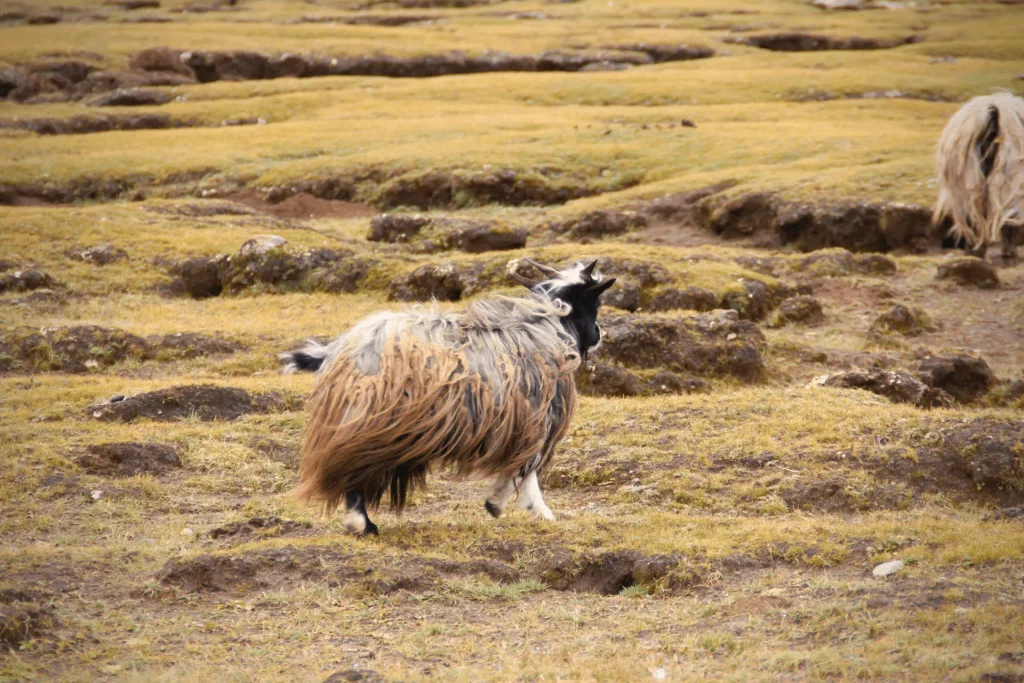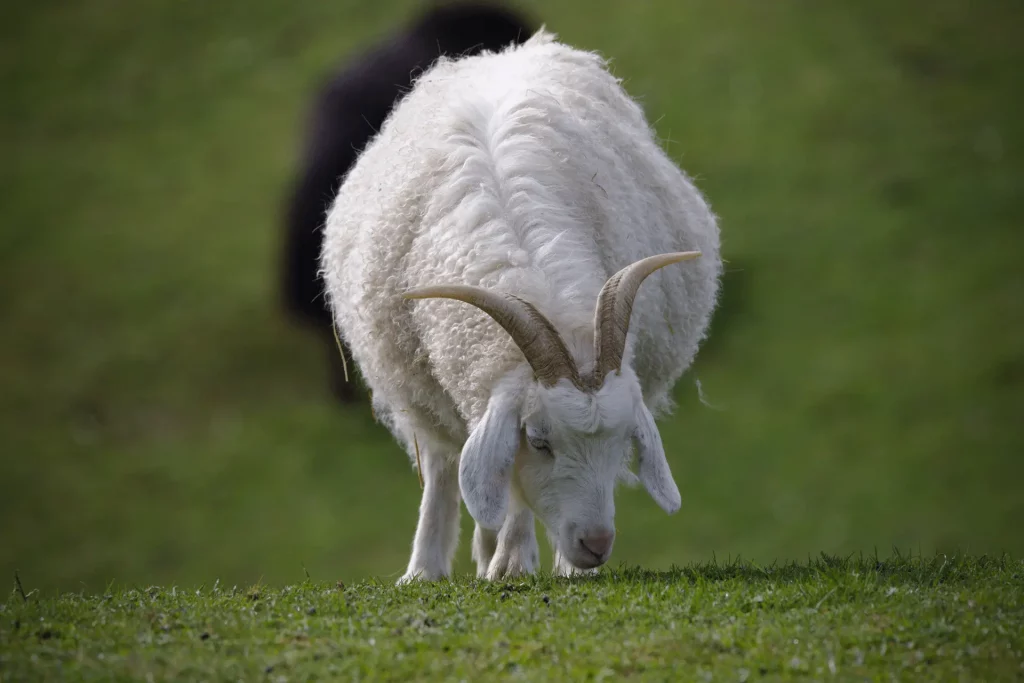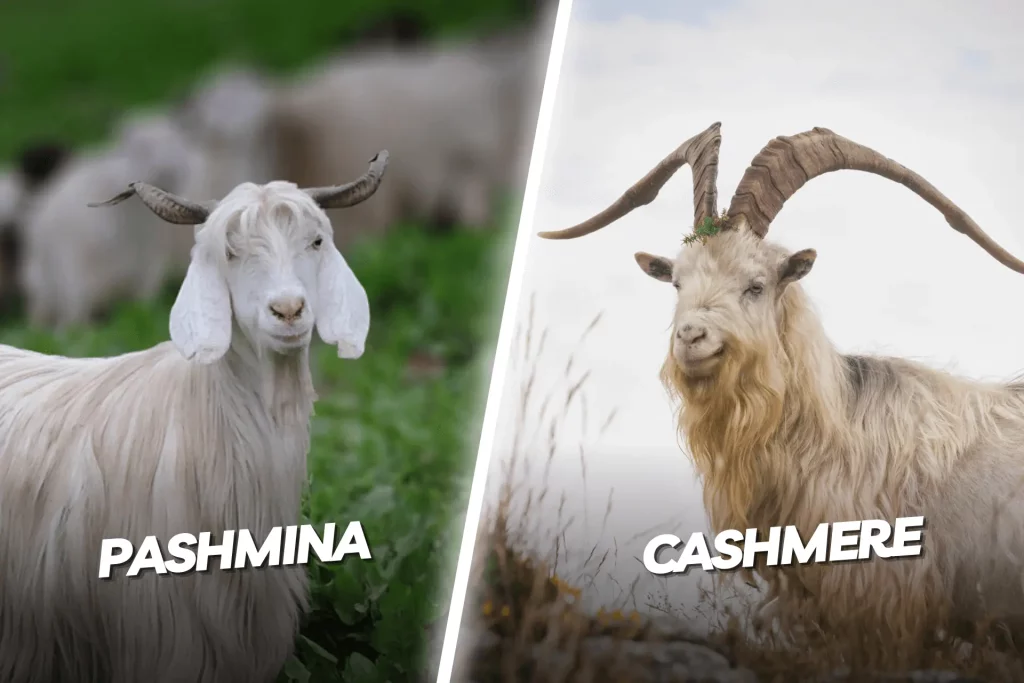Cashmere and pashmina are two of the finest examples of materials that may be described as soft and sumptuous. If, on the other hand, you’re attempting to choose between the two options, you might be curious about the differences between the two.
Given that they are both derived from goats, there should be a fair amount of overlap between them. There are a few subtle distinctions that may be made between the two. To assist you in gaining a better understanding of the distinctions between pashmina and cashmere, I have written this comparison guide.
While cashmere can originate from any number of different goats, a pashmina can only be obtained from one particular breed of goat. Pashmina is a subcategory of cashmere. Pashmina is cheaper, softer, and warmer than cashmere because it can only be obtained from one specific goat breed. Cashmere is also hot and mild but more long-lasting than pashmina and costs far less.
Is pashmina a superior fabric to cashmere, or is cashmere preferable to pashmina? Well, it simply depends. In the following paragraphs, we will explore the distinctions between these two types of cloth. In addition, we will discuss the benefits and drawbacks of each kind of cloth so that you can determine which one is superior.
Table of Contents
What is the Pashmina?

Another variety of excellent and delicate wool, known as pashmina, is woven from the hair of Himalayan goats. However, cashmere and pashmina are not interchangeable terms in this context. We can classify pashmina as a subcategory or grade of cashmere.
They originate from the Changthangi breed of Himalayan goats, which are indigenous to the high plateau of Ladakh in India and are used to produce these products. Because of the severe winters that are common in this area, the goats’ undercoats consist of fine wool that is especially good at trapping heat.
In comparison to other types of cashmere wool, pashmina is noticeably softer and finer. We can declare that they are of the highest possible cashmere quality. On the other hand, only a seasoned professional in the industry can likely distinguish between the two textures.
The diameter of a pashmina fiber is around 10-15 microns. Because of its fine texture, attractive scarves, shawls, wraps, and covers can only be created by hand-spinning the wool and manually weaving the finished products.
What is Cashmere?

Cashmere is a kind of wool that is extremely fine and soft, and it is used in the production of yarn, fabrics, and garments. The word “cashmere” originates from an anglicized version of Kashmir, a region in India. Cashmere is most commonly associated with Kashmir shawls, designed in Colonial India and made their way to the Western world in the 19th century.
These days, cashmere is widely regarded as one of the finest and most desirable types of fibers available anywhere in the globe. It is beneficial in the production of scarves and sweaters.
Cashmere, in particular, is produced from the hair of goats, more specifically the hair of Himalayan goats, in contrast to other forms of wool, which are often obtained from sheep.
There are several distinct breeds of Himalayan goats, such as the Changthangi goat, which is native to the Changthang plateau in the Ladakh area; the Chegu goat, which is native to Himachal Pradesh; the Malra breed, which is native to the Kargil region; and the Chyangara, which originates in Nepal.
The best time to collect the wool is in the spring when the goats are shedding their winter coats. Before the thread can be prepared for its ultimate purpose as cashmere, it must go through several processes, including sorting, cleaning, mixing, and reaching. In addition, cashmere wool is more durable, delicate, and lighter than sheep wool while also being three times more insulating.
Cashmere is renowned for its luxurious texture and feel. If you want to experience luxury with a touch of warmth, be sure to check out this selection of luxury sweaters, all at a good price.
Where Do Pashmina and Cashmere Differ From One Another?

Both pashmina and cashmere are types of cloth that are created from the undercoat of goats. On the other hand, the distinction is found in the particular goat from whom the fur is obtained. There are many different kinds of cashmere; however, not all cashmere is the same as pashmina.
The specific breed of goat from which pashmina is derived is the Changthangi goat. The Changthang region is a hilly terrain that reaches India, where the term Changthangi originates. The primary means of subsistence for the people in this region is the collection of fibers from the pashmina goat.
On the other hand, cashmere is obtained from the undercoat of some Himalayan mountain goats, among which is the pashmina goat. It is not derived from a particular goat breed but from a specific sort of goat.
Compared to the Changthangi goat, the Cashmere goat is far more common. Today, cashmere is produced in a wider variety of nations than ever, including Turkey, Afghanistan, Australia, and New Zealand—all of which were not originally a part of the Kashmir area.
1. Durability:
The fact that pashmina and cashmere are fragile fibers is one of the few drawbacks of these two materials. Because their fibers are so fine, the resulting fabric is not among the most durable. Because of this, either one of them may be harmed relatively simply.
Keep in mind, however, that the weaving of a pashmina requires the use of hand spinning. Because the fibers are so tiny, they are susceptible to breaking relatively quickly. The cashmere fibers have a little larger diameter and a significantly thicker appearance. Although it is still considered delicate, this indicates that cashmere is more robust and long-lasting than other fibers.
2. Size of Fibers:
The fibers used to make pashmina are often thinner and more delicate than those used to make other varieties of cashmere. Regarding the fabric’s qualities, the fibers’ size makes all the difference worldwide. Microns are the unit of measurement for individual fibers due to their extreme minuteness. A micron is the unit of measure utilized while determining the diameter of the fibers.
The fibers used to make pashmina are considered to be exceptionally fine. In most cases, they fall anywhere between 10 and 16 microns. Cashmere fibers are typically between 16 and 19 microns in diameter, making them more significant than other fibers. Even if the two sizes only range a little from one another, they can affect the two textiles’ strength, softness, and warmth.
3. Warmth:
Both of these fibers are pretty warm. This is due to the environment that the goats are accustomed to, which is usually rather cold, particularly in the winter. Both of these items are incredibly insulating because they are constructed from the undercoat of goats.
These materials ought to be warm enough to be worn with either no extra layers or very few. It is essential to take a second look at the size of the fibers. Cashmere is often a warmer material than pashmina because the fibers of cashmere are somewhat thicker than those of pashmina. However, the pashmina’s suppleness contributes to the garment’s ability to retain heat.
Merino wool provides a higher level of warmth than cashmere in the lower price range. To gain a better understanding of the distinctions between the two, it is recommended to review the available information.
4. Comfort in Handling:
Because of their status as delicate materials, pashmina and cashmere should be kept from washing machines like you would wash other types of clothing. One of the causes is that both tend to become entangled quickly.
You must take care not to wash them with any articles of clothing that include decorations, zippers, or other closures. When it comes to wearing pashmina or cashmere, it’s best not to accessorize with necklaces or different jewelry types. This is especially true for women.
The tendency of cashmere textiles to develop little balls known as “pills” is another drawback of the material. Using a washing machine to clean the cloth may make the situation much more difficult. In addition, any form of chemical, like fabric softener, moisturizer, or perfume, can tamper with the fabric’s characteristics.
After you wear your pashmina or cashmere every two or three times, you should give it a hand wash to clean it again. It is not required to wash it after each use because doing so may cause the fabric to degrade, pill, or shed some of its softness.
Washing it after each use may cause the fabric to lose some of its softness. If you only wear these two types of cloth occasionally, you may also choose to have them dry cleaned. However, because dry cleaning involves chemicals, it is not a good idea to have it professionally cleaned for an excessive amount.
5. Cost:
The price is one disadvantage shared by each of these types of cloth. Both are highly pricey because it requires a considerable amount of fur to manufacture the fabric, and fur can only be gathered once every year. In addition, the goats from which pashmina and cashmere are derived may only be located in particular regions of the world.
Considering all this, the most costly cashmere variety is pashmina. This is because there is a limited fabric supply since goats are only found in a specific geographical region.
In general, other types of cashmere fabric that are not pashmina are easier to come by, which results in their being less expensive than pashmina. However, its price remains high because there is still a limited supply of cashmere compared, to other materials, such as cotton.
Several goods on the market today are marketed as being made of synthetic cashmere. These products can be composed wholly of synthetic fibers or a combination of cashmere and synthetic fibers.
These goods made of synthetic cashmere will be more affordable and long-lasting than those made of genuine cashmere. On the other hand, some of the coziness and suppleness will be diminished.
The Good and the Bad of Pashmina:
Let’s take a brief rundown of the benefits and drawbacks of the pashmina fabric now that you have a better understanding of the properties the pashmina. The fact that pashmina is made from natural fibers provides it with superior properties, which is one of the many reasons why it is so popular. Additionally, it is regarded as one of the warmest and softest textiles, making it a premium option.
However, it comes with some drawbacks. Because of its reputation as a sumptuous material, it also has a reputation for being one of the most costly textiles.
In addition, it is less readily available than other natural materials, such as cotton and wool. Last but not least, the fabric is fragile, which indicates that it is less long-lasting than other fabrics and requires extra attention.
The Good and the Bad of Cashmere:
Cashmere, like any other material, has both its advantages and disadvantages. It is also considered a natural fabric, like pashmina, because it is derived from goats.
On the other hand, cashmere is more readily available than pashmina since it can be obtained from a wider variety of goat breeds than pashmina can. This item’s price is lower than pashmina because of this factor. Additionally, it has slightly increased thickness, making it cozier and more long-lasting.
However, one of the drawbacks of cashmere is that even if it is somewhat more durable than cashmere, it is still regarded as a delicate cloth. This is one of the reasons why cashmere is so expensive. Additionally, it calls for extra attention to detail.
Last but not least, one of the reasons why cashmere is still one of the more expensive types of cloth is that the fibers that are used to produce it can only be harvested once every year.
Frequently Asked Questions:
Can you wash pashmina?
Yes, you can wash pashmina. It’s pretty straightforward – you must use a mild detergent in cool water and hand wash it gently. Hang the pashmina up to dry, avoiding direct sunlight or heat sources, as this may damage the delicate fabric.
How to wash pashmina?
Once you’ve assembled your supplies to wash your pashmina, it’s time to start! Start by running the fabric under cool water and gently squeezing it until all dirt is removed. You don’t want to rub or scrub too hard, which might damage the delicate material. If there are any stubborn stains, apply a small amount of shampoo or liquid detergent directly to the area and lightly rub it in. Once the dirt is gone, rinse any excess soap with cool water.
Is cashmere cruelty-free?
Cashmere is a type of wool that usually comes from goats, most commonly in the Kashmir region of India. Although cashmere provides its wearer with luxurious warmth and comfort, some people question if wearing it is ethical due to its production process—which can involve cruelty towards animals.
Bottom Line:
The texture is the primary distinction between cashmere and pashmina. Pashmina is softer than cashmere. The surface of pashmina is incredibly delicate and supple. Although cashmere also has a smooth and light texture, in comparison to pashmina, an expert may feel the texture of cashmere to be more coarse.

